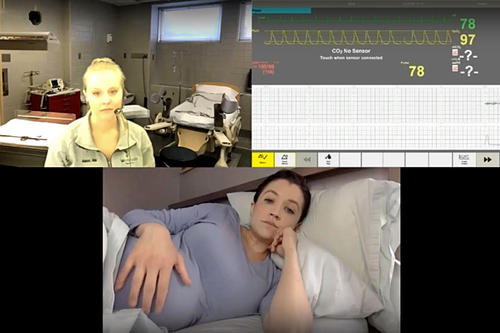
Nurses, doctors, and other health professionals need plenty of skills, few more important than the ability to interact well with patients and ask the right questions. So in March, when the University of Minnesota moved all in-person classes online, it triggered a big change in how that kind of education is delivered.
Many of the skills involved in patient interactions are taught via simulated situations, with the help of the University of Minnesota (M) Simulation team. Key to the M Simulation team’s work is its Standardized Patient (SP) Program. SPs are individuals from the community who are coached to accurately and consistently recreate the history, personality, physical findings, and emotional state of an actual patient. Since 1963, SPs have been trained to serve as an integral part of health sciences education across the country—usually playing their roles live.
According to M Simulation Education Director Anne Woll, approximately 330 trained SPs currently serve on-call for educational contact each year with students across the health sciences and medical residents on the Twin Cities and Duluth campuses, as well as the regional healthcare community.
Using the Zoom platform, seven M Simulation staff learned the logistics needed to implement formative Objective Structured Clinical Examinations (OSCEs) and to effectively train SPs online. By March 20, the M Simulation team had rolled out two fully online formative OSCEs with health sciences students.
Following the success of the two OSCE events, the team mobilized again to develop an online series via Zoom to share what they had learned with others in the simulation industry. Also, incoming M Simulation Executive Director Lou Clark, who has monitored responses nationally and internationally, reached out to colleagues across the globe by creating a Facebook group called Simulation Online 2020. The group now has more than 430 members.




